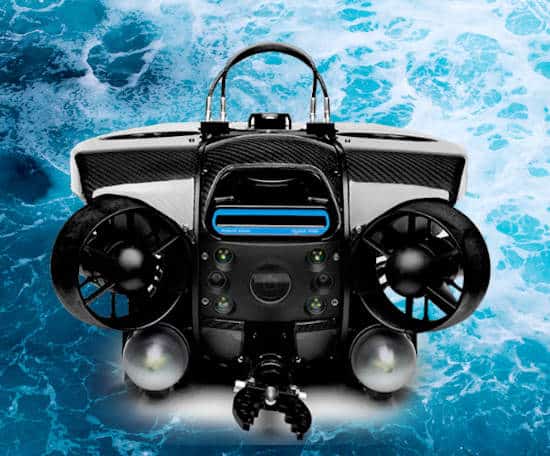Top 12 Considerations Before Buying an ROV for Hull Inspections

So, you’re thinking about getting an underwater ROV to keep an eye on your ship’s hull? Smart move! But before you dive into your wallet, there are a few things you should mull over. Buying an ROV isn’t like picking up a new pair of shades; it’s more like adopting a high-tech underwater pet. To help you navigate these waters, we’ve put together the top 12 things to consider before bringing home your very own mechanical mariner. Let’s get started!
* Please send feedback/suggestions to editor @ shipuniverse.com
- Know Your Depths
- Before anything else, think about how deep your ROV needs to go. Different ROVs are made for different depths, and you don’t want yours to buckle under pressure!
- Camera Clarity is Key
- You’re buying this thing to see, right? Make sure the camera quality is up to snuff. Look for HD capabilities because spotting issues on your hull should be as clear as a sunny day at sea.
- Maneuverability Matters
- Your ROV should move like a dolphin, not a clumsy sea cow. Check out its turning radius, propulsion power, and how it handles in tight spots. After all, it’s going to weave around barnacles and other underwater surprises.
- Battery Life – The Longer, The Better
- Imagine this: you’re halfway through an inspection, and your ROV’s battery dies. Not cool. Make sure the battery life is long enough for your needs, so you don’t have to cut your sea explorations short.
- Durability in the Deep
- The ocean’s tough. Your ROV should be built like a tank – well, a mini-submarine tank. Ensure it’s sturdy enough to withstand salty seas and unexpected bumps.
- Tether or Not to Tether
- To be tied or not to be tied? Tethered ROVs have a lifeline to the surface, which can be great for control and power, but a wireless ROV offers more freedom. Consider what works best for your maritime missions.
- Sensing the Sensors
- A good ROV comes packed with sensors – like a smart shark sniffing out things. From sonar to temperature gauges, check out what sensory gear it’s got. More sensors mean more data for a thorough hull health check.
- Ease of Use – User-Friendly is Friendly Indeed
- Unless you’re a tech wizard, you’ll want an ROV that’s as easy to use as your TV remote. User-friendly controls, intuitive software, and hassle-free maintenance are key. You’re a ship master, not a robotics engineer!
- Storage and Transport
- Think about where you’ll keep your new underwater buddy. These ROVs aren’t exactly pocket-sized. Make sure you’ve got the space to store and transport it without playing a game of maritime Tetris.
- Support and Service
- A good ROV comes with a crew – well, a customer service crew. Check out the manufacturer’s support and service options. Having expert help at hand can be a lifesaver, especially when you’re all at sea with tech troubles.
- Cost – The Big Question
- Ah, the price tag. ROVs range from ‘Oh, nice!’ to ‘Seriously?’. Set a budget that makes sense for your needs and your bank account. Remember, the priciest option isn’t always the best for everyone.
- Future-Proofing
- Technology moves faster than a speedboat. Think about how future-proof the ROV is. Can it be upgraded? Will it still be relevant in a few years? You want a device that won’t be old news by next season.
Did You Know? High-end underwater ROVs are now surprisingly affordable. The ROV line from Blueye starts at just over 5k.
Click here to find your Ideal Underwater ROV
Remember, picking the right ROV is like choosing the right ship; it needs to fit your journey and purpose. Consider these points carefully, and you’ll be all set to embark on a fantastic voyage of hull inspections, with your trusty ROV as your first mate. Happy sailing, and here’s to clear waters and well-maintained hulls! 🚢🌊

Do you have a Maritime Product or Service that may be of interest to Shipowners? Tell us about it here!
Do you have feedback or insights? Please reach out to editor @ shipuniverse.com



